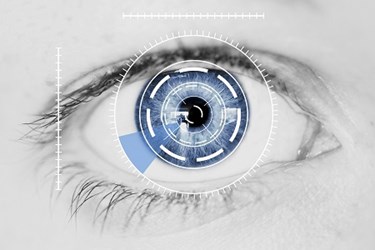Smart Contact Lens Human Trials Set

By Christine Kern, contributing writer

Google and Novartis plan to begin testing smart contact lenses by 2016.
Google and Novartis are reportedly ready to begin human trials of a smart contact lens that is designed to restore the eye’s natural autofocus. Novartis CEO Joe Jiminez told Reuters the company is developing a new prototype of the technological lens that can be used by individuals with age-related vision problems.
The prototype is anticipated to be ready for trial in 2016 with lenses designed to counter presbyopia, or age-related far-sightedness, for use by those who can no longer read without using glasses. “This project is progressing well,” Jimenez said. “I had said it would take about five years to see a product on the market. The calendar is on track and we are already developing a technological lens prototype (that) should be tested on humans in 2016.”
The lens, as described on the official Google blog is “a smart contact lens that’s built to measure glucose levels in tears using a tiny wireless chip and miniaturized glucose sensor that are embedded between two layers of soft contact lens material.” The blog went on to indicate the company was testing prototypes that could create a reading every second and that might have integrated LED lights that would light up to warn the wearer when glucose levels were too high or low.
Novartis and Google have collaborated to create two different types of smart contact lenses. The second lens is designed to help diabetics track and manage their blood glucose levels. The lenses have been on Goggle’s agenda for over a year.
“We’ve always said that we’d seek out projects that seem a bit speculative or strange, and at a time when the International Diabetes Federation is declaring that the world is ‘losing the battle’ against diabetes, we thought this project was worth a shot,” explained Project co-founders Brian Otis and Babak Parviz on Google’s blog.
They continued, “Over the years, many scientists have investigated various body fluids — such as tears — in the hopes of finding an easier way for people to track their glucose levels. But as you can imagine, tears are hard to collect and study. At Google, we wondered if miniaturized electronics — think chips and sensors so small they look like bits of glitter and an antenna thinner than a human hair — might be a way to crack the mystery of tear glucose and measure it with greater accuracy.” The glucose-monitoring prototype lens was the result of this inspiration.
